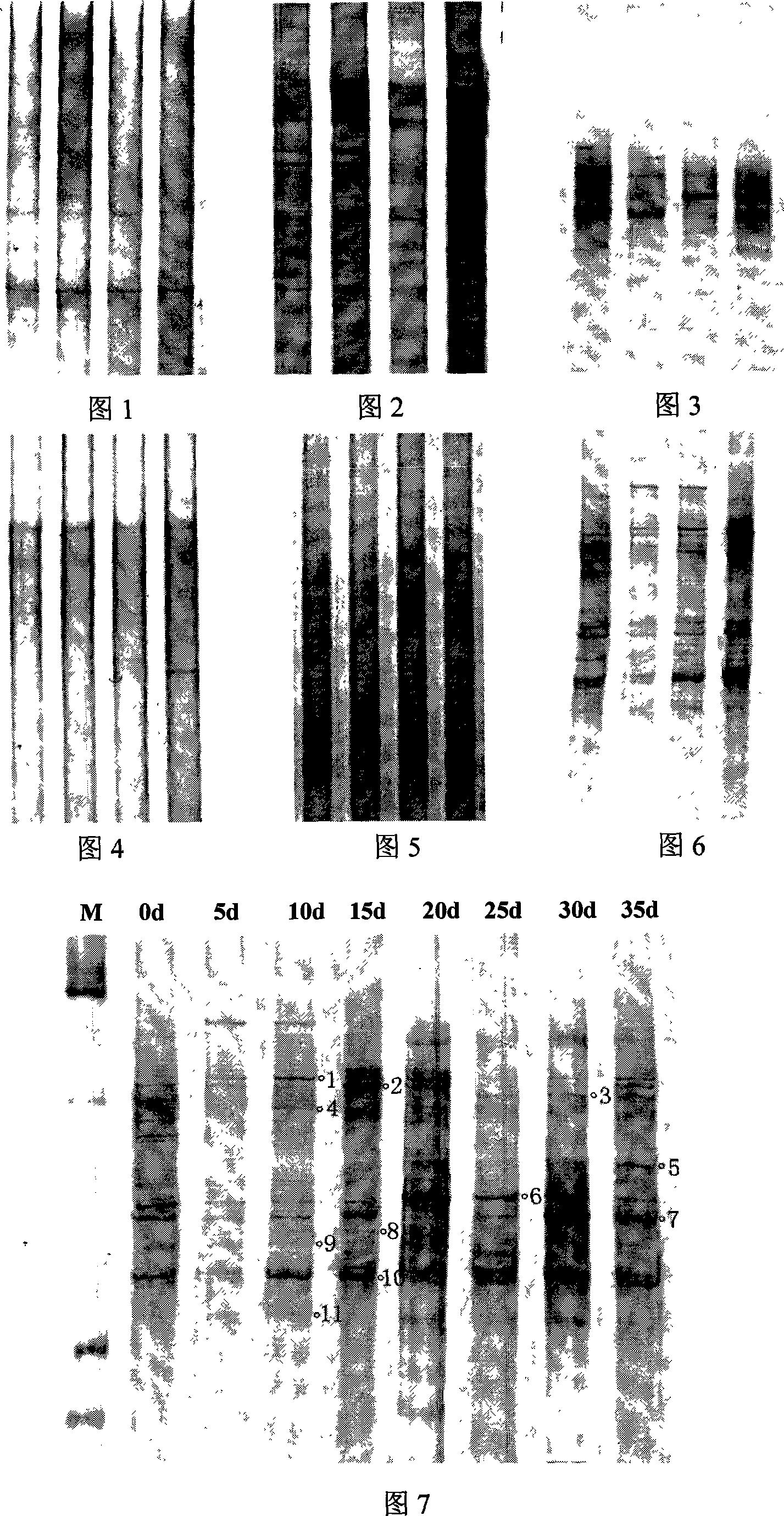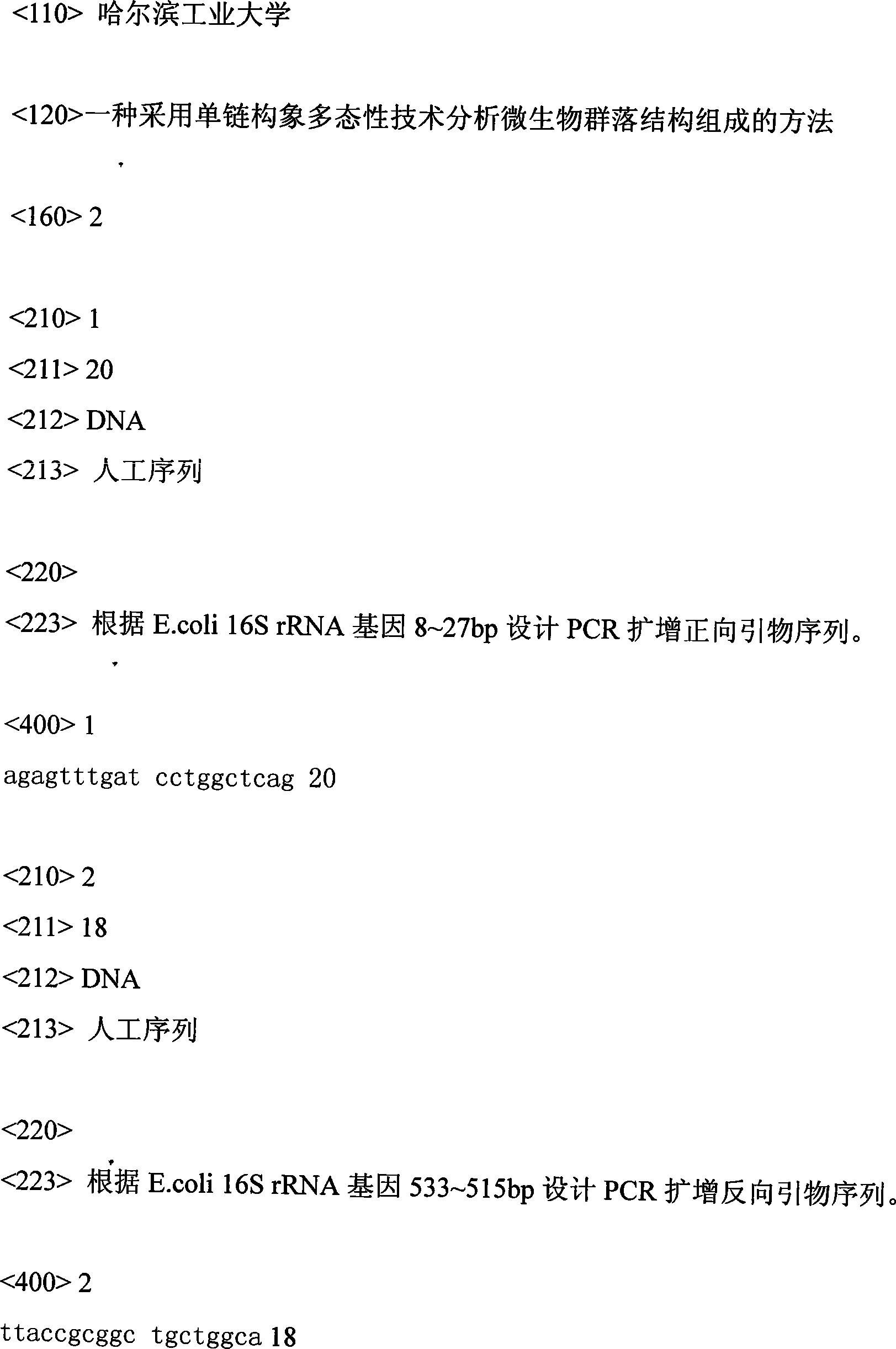Method for analyzing structure composition of microorganism community by employing single-chain conformation polymorphism technique
A microbial community and technical analysis technology, applied in the field of analyzing the composition of the microbial community structure, can solve problems such as the difficulty in analyzing the biological composition and structure of the microbial community, and achieve the effect of improving operating efficiency
- Summary
- Abstract
- Description
- Claims
- Application Information
AI Technical Summary
Problems solved by technology
Method used
Image
Examples
specific Embodiment approach 1
[0007] Specific embodiment one: the present embodiment adopts single-strand conformation polymorphism technique to analyze the method for microbial community structure to carry out as follows: one, adopt the DNA extraction method (JIZHONG ZHOU, MARY ANN BRUNS, JAMES M. TIEDJE.DNA Recovery from Soils of Diverse Composition.APPLIED AND ENVIRONMENTALMICROBIOLOGY, 1996,62:316-322) extracts microbial community DNA; Two, PCR amplification: PCR amplification forward primer sequence is AGAGTTTGATCCTGGCTCAG, PCR amplification reverse primer sequence is TTACCGCGGCTGCTGGCA, the 5' end of the reverse primer is labeled with phosphate; 3. Enzyme digestion to remove the antisense strand: the enzyme digestion reaction system is 50 μL consisting of 5 μL 10×buffer buffer solution, 40 μL PCR amplification product and 5 μL λ nucleic acid at a concentration of 5 U / μL Composed of exonuclease, the enzyme digestion reaction system was reacted in an environment of 37 ° C for 3 to 4 hours, then the enzy...
specific Embodiment approach 2
[0016] Specific embodiment 2: The difference between this embodiment and specific embodiment 1 is: the PCR reaction program in step 2 is: preheating at 94°C for 5 minutes, first cycle of denaturation at 94°C for 40 seconds, annealing at 55°C for 40 seconds, and extension at 72°C for 60 seconds. Cycled 30 times, the annealing temperature decreased by 0.1 °C in each cycle, and finally extended at 72 °C for 10 min. Other steps and parameters are the same as those in Embodiment 1.
specific Embodiment approach 3
[0017] Embodiment 3: The difference between this embodiment and Embodiment 1 is that the PCR reaction system in step 2 is 50 μL consisting of 5 μL 10×PCR buffer, 4 μL dNTP, 1.5 μL forward primer with a concentration of 20 μmol / L, 1.5 μL Concentration of 20μmol / L reverse primer, 0.125U EX Taq DNA polymerase, 1~5ng microbial community DNA and the rest deionized water; 10×PCR buffer contains 2.5mmol / L Mg 2+ ; The concentration of various deoxynucleoside triphosphates in dNTP was 2.5 μmol / L. Other steps and parameters are the same as those in Embodiment 1.
PUM
 Login to View More
Login to View More Abstract
Description
Claims
Application Information
 Login to View More
Login to View More - R&D
- Intellectual Property
- Life Sciences
- Materials
- Tech Scout
- Unparalleled Data Quality
- Higher Quality Content
- 60% Fewer Hallucinations
Browse by: Latest US Patents, China's latest patents, Technical Efficacy Thesaurus, Application Domain, Technology Topic, Popular Technical Reports.
© 2025 PatSnap. All rights reserved.Legal|Privacy policy|Modern Slavery Act Transparency Statement|Sitemap|About US| Contact US: help@patsnap.com


